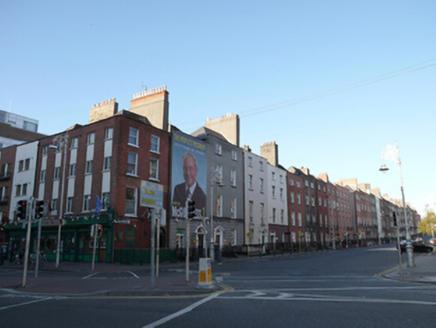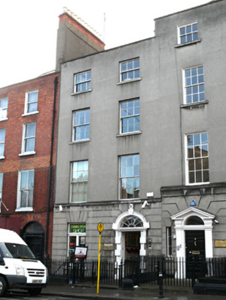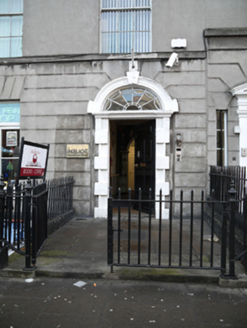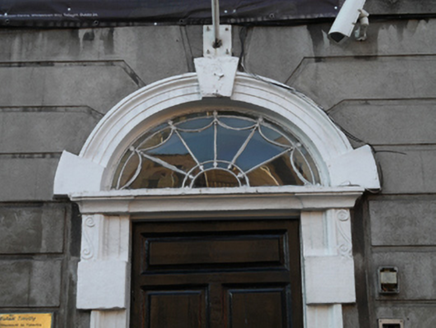Survey Data
Reg No
50010624
Rating
Regional
Categories of Special Interest
Architectural, Artistic
Original Use
House
In Use As
Office
Date
1760 - 1775
Coordinates
315691, 234899
Date Recorded
06/11/2011
Date Updated
--/--/--
Description
Terraced two-bay four-storey house over exposed basement, built in period 1763-73, now in use as political party offices and shop. M-profile slate roof hipped to north side with pair of tall rendered brick chimneystacks to south party wall having clay pots. Roof behind parapet wall with concrete coping. Ruled-and-lined rendered walls, channelled to ground floor with chamfered granite plinth course over rendered basement walls. Square-headed window openings with painted granite sills and replacement timber sliding sash windows with convex horns, six-over-six pane to middle floors and three-over-three pane to top floor, three-over-three pane to basement and replacement timber window to ground floor. Round-headed door opening with painted stone doorcase. Early timber door with six raised-and-fielded panels, block-and-start surround and stepped lintel cornice with moulded archivolt and three keystones housing original leaded cobweb fanlight. Door opens onto sandstone paved platform and single step to street, bridging basement. Platform enclosed to either side by original wrought-iron railings, with replacement steel gates to street. Basement area enclosed by wrought-iron railings with some cast-iron urn finials set on cement plinth wall and steel steps providing access.
Appraisal
Parnell Square was the product of Dr Bartholomew Mosse who in 1748 leased four acres of Luke Gardiner with the laying out of the plots from 1758 to 1773. There the New Gardens (now the Garden of Remembrance) were constructed, the success of which precipitated the development of the surrounding square, largely by the hospital's chief builders. This modestly-scaled house has been rendered and remodelled to the interior but retains a decorative Gibbsian doorcase and an early panelled door, playing its part in retaining the relatively intact appearance of the west side of this notable square.







